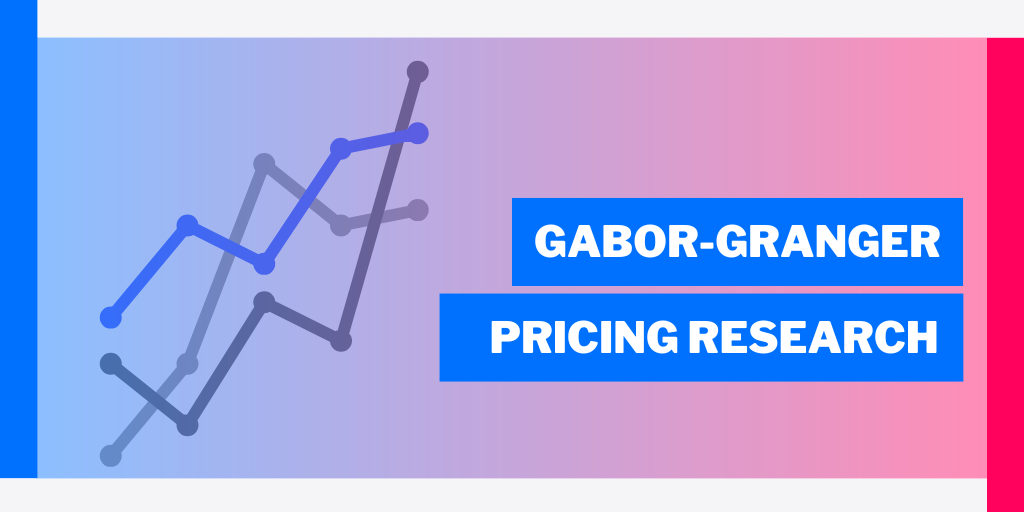
What is the Gabor-Granger method?
09/12/2022 - Price optimization
The Gabor-Granger method is a pricing research technique that establishes the elasticity of demand and helps optimise pricing decisions. It involves surveying a representative sample of consumers about a specific product or service. Consumers are asked how likely they are to buy the item at a certain price. From this research, businesses can determine how much they can increase or reduce their products’ prices without affecting demand while maintaining the profit margin.
Periodic research using the Gabor-Granger method can help determine how users’ attitudes to prices vary and aid pricing strategy optimisation. Depending on the company’s objectives, this tactic can be combined with other pricing research methodologies. These different strategies can be used to find out users’ opinions about your prices. Ultimately, it aims to observe pricing behaviour and learn how this affects the growth and development of your business.
How to start Gabor-Granger method research
To prepare a survey using the Gabor-Granger method, you need to ask the following question: “Would you buy this product at this price?” The company will previously define the prices shown to users. The answer to the question will be closed, with options ranging from “extremely likely” to “not at all likely.”
The survey is conducted individually for each user to avoid outside interference. After the first question with an initial price, the price goes up or down until the highest price the consumer is willing to pay can be determined. For example, if the initial price is too high, so the customer is unwilling to pay, the price will be reduced until the respondent agrees to purchase. So, question after question, data collection allows you to plot a demand curve from which the most appropriate price for each item can be ascertained.
Advantages and disadvantages of the Gabor-Granger method
The main advantage is that it is a simple and clear way to obtain first-hand information from your consumers. It will give you an overview of different consumer groups’ willingness to pay. You will be able to find out the value they attribute to your products quickly and agilely without having to embark on large-scale research projects.
On the other hand, one of the disadvantages of this research tactic most highlighted by pricing experts is that it does not take into account competitors’ products. Respondents are not informed if a competitor has the same or similar product and at what price. This often invalidates the results. However, with competitors’ prices as a benchmark, consumers will make decisions more similar to those they would make in front of a computer or in a physical store.

Practical application of results: dynamic pricing strategy
A clearer knowledge of the prices consumers expect and the ranges you can move within without affecting demand will make implementing a successful dynamic pricing strategy easier. You will be able to change your prices according to market movements without damaging your company. Whether through promotions and offers or personalised pricing, you’ll be able to attract a larger audience without reducing your profit margin.
You can use an automated dynamic pricing tool with self-learning capabilities, to speed up these price changes. This software recommends the best price every time, calculated from pricing rules based on almost any combination of variables (margins, conversions, positioning, stock, etc…). It also takes into account other companies’ prices so that you always secure a competitive position.
Category: Price optimization
